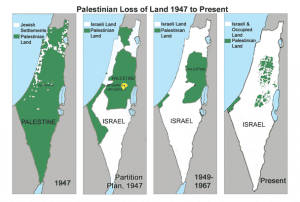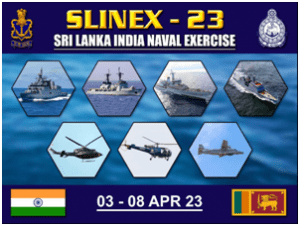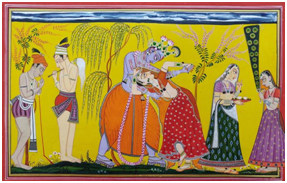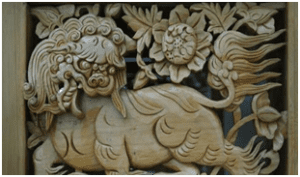TOPIC : SUPREME COURT RULING ON ECI APPOINTMENTS- MARKING A NEW ERA OF TRANSPARENCY
THE CONTEXT: Recently, a five-judge bench of the Supreme Court unanimously ruled that a high-power committee consisting of the Prime Minister, Leader of the Opposition in Lok Sabha, and the Chief Justice of India must pick the Chief Election Commissioner (CEC) and Election Commissioners (ECs). The following article attempts to analyse this judgment and its implications from the UPSC exam perspective.
KEY HIGHLIGHTS OF THE JUDGEMENT
- The Supreme Court (SC) recently ruled that the Constituent Assembly (CA) had intended for elections to be conducted by an independent commission, as evidenced by their debates on the appointment of the Election Commission of India (ECI).
- The addition of the phrase “subject to the provisions of any law made in that behalf by Parliament” indicates that the CA also anticipated parliamentary norms governing the appointment process.
- Although the Court typically does not interfere with legislative powers, the Constitution’s context and the legislature’s inaction created a need for intervention.
- Regarding the removal process for the Chief Election Commissioner (CEC) and Election Commissioners (ECs), the Court determined that the CEC holds a unique position and cannot be subject to the same removal process as the ECs, as article 324 becomes inoperative without the CEC.
- The Court left it up to the government to decide whether to fund the EC, establish a permanent secretariat, and charge related expenditures to the Consolidated Fund of India.
GOI’S STAND
- The government contended that without a law from Parliament, the President holds the constitutional authority and requested that the Court should exhibit judicial restraint.
- The Supreme Court’s decision on the appointment of the Election Commission of India raises concerns about the separation of powers because the Constitution gives Parliament the authority to make laws on the matter.
SC’S REPLY
- The Court acknowledged that its ruling is subject to any future laws enacted by Parliament, which could potentially overturn it.
- An alternate perspective is that since there is currently no law governing the issue, the Court must intervene to fill the resulting constitutional vacuum.
WHAT LED THE SUPREME COURT TO DIRECT REFORMS IN ECI’S APPOINTMENTS?
- The decision by the Supreme court comes amid allegations that election commission seemed to function with prejudice for the ruling party at the Centre, considering they were the one who brought the commissioner to power.
- The public interest petitions sought a law governing the appointment of the CEC and ECs. A first PIL was filed in 2015, and the Supreme Court agreed to hear a second PIL on the issue filed in 2018 by Delhi BJP leader Ashwini Upadhyaya.
- In 2015, a public interest litigation was filed by Anoop Baranwal challenging the constitutional validity of the practice of the Centre appointing members of the Election Commission.
- In October 2018, a two-judge bench of the SC referred the case to a larger bench since it would require a close examination of Article 324 of the Constitution, which deals with the mandate of the Chief Election Commissioner.
- In September 2022, a five-judge Constitution bench headed by Justice KM Joseph began hearing the case and almost a month later, the verdict was reserved.
- While hearing the plea in November, 2022, the apex court had noted that the appointment of Arun Goel as EC had been carried out with “lightning speed”, with the procedure taking less than 24 hours on November 18, 2022, from start to finish.
BASIS OF JUDICIAL INTERVENTION
- Absence of law: The crux of the challenge is that since Parliament makes no law on this issue.
- Urge for judicial intervention: The Court must step in to fill the constitutional vacuum, urges the PIL.
- Question of executive non-interference: This examination also leads to the larger question of separation of powers and if the judiciary is overstepping its role in filling this gap in the law.
STRUCTURE OF ECI
- The Election Commission of India consists of a Chief Election Commissioner (CEC) and two Election Commissioners (ECs).
- The CEC is the head of the Commission and has a higher status than the ECs. All decisions of the Commission are taken by a majority vote, with the CEC having the casting vote in case of a tie.
- According to Article 324, the Election Commission shall consist of the CEC and such number of other election commissioners, if any, as the President may from time-to-time fix.
Babasaheb Ambedkar had in 1949 said, “the whole election machinery should be in the hands of a Central Election Commission, which alone would be entitled to issue directives to returning officers, polling officers and others”.
CONSTITUTIONAL PROCEDURES FOR APPOINTMENTS AND REMOVALS IN ECI
APPOINTMENT
- Article 324(2): The appointment of the CEC and other Election Commissioners shall be made by the President, subject to the provisions of any law made in that behalf by Parliament.
- The Law Minister suggests a pool of suitable candidates to the Prime Minister for consideration.
- The President makes the appointment on the advice of the PM.
TENURE
- The President appoints Chief Election Commissioner and Election Commissioners.
- They have tenure of six years, or up to the age of 65 years, whichever is earlier.
- They enjoy the same status and receive salary and perks as available to Judges of the Supreme Court of India.
- All Election Commissioners have equal say in the decision making of the Commission.
REMOVAL
- The Chief Election Commissioner can be removed from his office in the same manner and on same grounds as a judge of the Supreme Court.
- In other words, he can be removed by the President on the basis of a resolution passed to that effect by both the Houses of Parliament with special majority, either on the ground of proved misbehavior or incapacity.
- Thus, he does not hold his office till the pleasure of the President, though he is appointed by him.
- Any other election commissioner or a regional commissioner cannot be removed from office except on the recommendation of the chief election commissioner.
SERVICE CONDITIONS OF CECS PRESENTLY
- Currently, the service conditions of the Chief Election Commissioner (CEC) are governed by the Election Commission (Conditions of Service of Election Commissioners and Transaction of Business) Act, 1991.
- As per this act, the CEC is entitled to a salary equal to that of a Supreme Court judge, along with other allowances and benefits. The CEC also has a government-provided residence and office.
ARGUMENTS IN SUPPORT AND AGAINST OF SUPREME COURT RULING
ARGUMENTS IN SUPPORT OF SC’S RULING
- Promoting transparency in appointments: The Supreme Court (SC) of India ordered reforms in the appointments of the Election Commission of India (ECI) because it found that the current process lacked transparency and was prone to political influence.
o There was no independent mechanism for the selection and appointment of the Chief Election Commissioner (CEC) and Election Commissioners (ECs), as the government held a dominant role in the process.
- Upholding Constitutional principles: This lack of independence and transparency in the appointment process was deemed to be a violation of the principles of democracy and the Constitution of India.
- Eliminating Arbitrary appointments: Furthermore, there were no fixed criteria or qualifications for the appointment of CECs and ECs. This led to arbitrary appointments on many occasions which overlooked merit and credibility.
- Question of non-partisanship:ECI failed on many occasions to use its powers effectively, because ECs are the appointees of the government of the day and not through an independent process of collegium.
o The SC’s decision will end the single party influence, essential to a democracy, where voting is the be-all and say-all of a functioning governance.
- Affirmative step: Various entities from the opposition and civil societies are affirmative for the decision claiming that insulating EC from Government influence & dependence will secure the integrity of the electoral process.
- Clear rules of removal and tenure: Also, the lack of a clear and defined process for the removal of CECs and ECs was found to be a significant flaw in the system. The Supreme Court has now said that the process of removing an EC should be the same as that for the CEC.
ARGUMENTS AGAINST SC’S RULING
- Violation of Separation of Powers: The ruling has been criticized for violating the principle of separation of powers, which stipulates that each branch of government should operate independently without encroaching on the jurisdiction of others.
o The government has argued that the appointment of Election Commissioners falls within the purview of the legislature and that the judiciary should not interfere with this domain.
- Judicial Overreach: Critics have argued that the Supreme Court has overstepped its authority by prescribing a new appointment process for Election Commissioners.
o The Constitution gives the power to appoint Election Commissioners to the President of India, who acts on the advice of the Council of Ministers. Any changes to this process should be made by the legislature and not the judiciary.
- Potential for Political Interference: Critics have argued that the new appointment process prescribed by the Supreme Court could lead to increased political interference.
o They argue that the proposed collegium system for selecting Election Commissioners, consisting of the Prime Minister, Leader of the Opposition in the Lok Sabha, and Chief Justice of India, could be subject to political influence and bias.
IMPORTANCE OF ELECTION COMMISSION OF INDIA (ECI) IN INDIAN DEMOCRACY
The Election Commission of India (ECI) plays a critical role in India’s democratic system. It is responsible for overseeing the conduct of elections, both at the national and state levels. The importance of the ECI for India can be understood in the following ways:
- Ensuring Free and Fair Elections: The ECI’s primary role is to conduct free and fair elections in the country. It is responsible for preparing and updating the electoral roll, supervising the conduct of elections, and ensuring that electoral laws and regulations are followed.
- Preserving the Integrity of the Electoral Process: The ECI plays a crucial role in preserving the integrity of the electoral process in India. It ensures that all eligible citizens are given the opportunity to vote, that their votes are counted accurately, and that the results are declared in a transparent and impartial manner.
- Protecting Democratic Values: The ECI is responsible for protecting the democratic values enshrined in the Indian Constitution. It ensures that the right to vote is protected, and that the election process is free from coercion, corruption, or other illegal practices.
- Upholding the Sovereignty of the Indian Constitution: The ECI upholds the sovereignty of the Indian Constitution by ensuring that the election process is conducted in a manner consistent with the constitutional principles of democracy, equality, and justice.
THE WAY FORWARD:
- Overcoming several issues through a transparent ECI: SC’s ruling has potential to carve out a more independent and transparent ECI. Such an independent and credible ECI should seriously address the several ills seen to be plaguing India’s electoral system, such as:
o allegations of selective culling of the electoral rolls;
o EVM voting often not complying with basic and essential requirements of ‘Democracy Principles’ i.e., each voter able to verify that her vote is cast-as-intended, recorded-as-cast and counted-as-recorded;
o vulgar use of money power; corrupting and criminalizing the elections; buying and selling of votes;
o brazen misuse of the media; partisan functioning of election officials; and non-enforcement of the Model Code of Conduct.
Only these measures can provide a level playing field, usher in integrity and restore confidence in the umpire, which is the essence of free and fair elections.
- Learning from best practices:
o In the United States, the Federal Election Commission (FEC) is an independent agency that oversees federal elections.
o In Australia, the Australian Electoral Commission (AEC) is an independent statutory authority that conducts federal elections and referendums.
o In both the US and Australia, the appointment of election commissioners is a political process, however, both countries have systems in place to ensure that the appointment process is non-partisan and that Commissioners serve fixed terms to maintain independence and impartiality.
- Preserving separation of powers: Both the Judiciary and Legislature must come on the same page to bring reforms in the appointment process as per the Constitutional procedures so as to uphold the legitimacy and acceptance of such reforms.
THE CONCLUSION: The ballot is more potent than the most powerful gun. Democracy facilitates a peaceful revolution at the hands of the common man if elections are held in a free and fair manner. The ECI’s role in ensuring free and fair elections, preserving the integrity of the electoral process, protecting democratic values, and upholding the sovereignty of the Indian Constitution makes it an essential institution for India’s democratic system. Thus, only a truly independent ECI can fulfill the Constitutional mandate of conducting free and fair elections.
Questions:
- “A person weak-kneed before the powerful cannot be appointed as Election Commissioner.” In the light of the statement, discuss the importance of having a transparent and independent appointment system for Election Commissioners in India.
- In a substantive democracy, the power to vote is “more potent than the most powerful gun”. People depend on an honest Election Commissioner, blessed with extraordinary powers, to guard the purity of the electoral process. Examine the statement in the light of recent Supreme court judgment which introduced a collegium for appointments to the Election Commissioners in India.
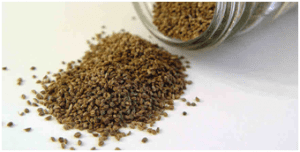
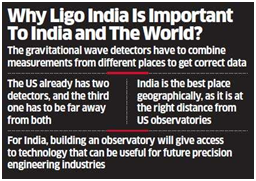
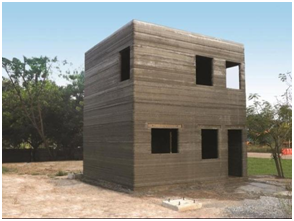

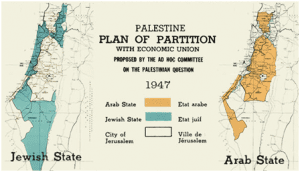
 commissioner left Palestine.
commissioner left Palestine.